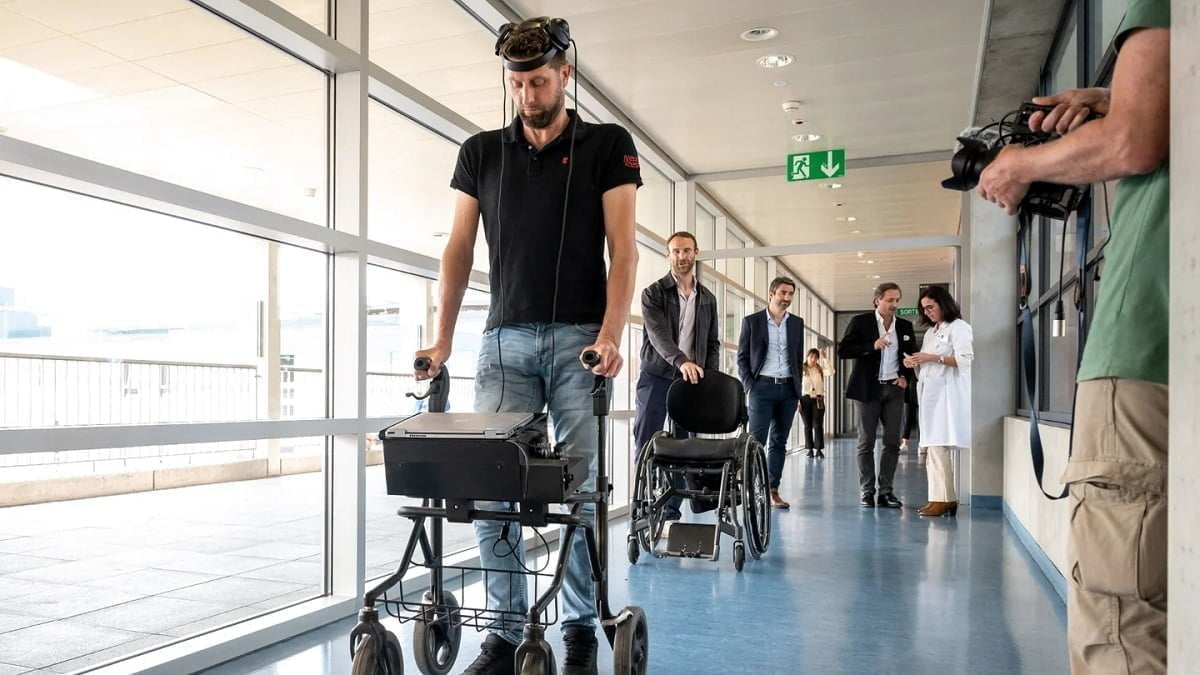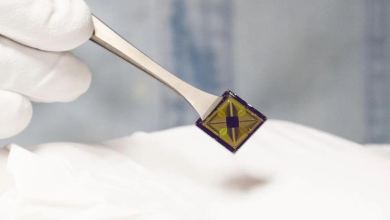Brain and spine implants assisted by AI helped a paralyzed man control his legs again
Earlier this month, a team of neuroscientists and researchers published a revolutionary study in the journal Nature, which elaborates on the effectiveness of electrical devices that were implanted into the brain and spinal cord of a paralyzed man. The devices have enabled the man to walk and climb stairs.
The implants integrate two experimental technologies designed for paralysis treatment and communicate wirelessly. The first device is positioned above the brain’s surface, decodes walking patterns, and transmits a signal to the second device that is inserted into the spinal cord. By stimulating the spinal cord with precise electrode sequences, the leg muscles required for walking are activated.
As per the study’s authors, the gadgets serve as a “digital link” that connects the brain to the spinal cord, circumventing the damaged parts of the spinal cord. An artificial intelligence thought decoder is utilized by the brain-spine interface to interpret the brain’s intentions, which are identifiable as electrical signals. These signals are then correlated with muscle movements.
Gert-Jan Oskam, a 40-year-old man from The Netherlands, who was left paralyzed after a cycling accident in 2011, is the subject of this new study. In 2017, Oskam was implanted with an experimental spinal-cord stimulator manufactured by the Netherlands-based biotechnology company, Onward Medical, which CEO Dave Marver says diminished his ability to walk.
“We’ve captured the thoughts of Gert-Jan, and translated these thoughts into a stimulation of the spinal cord to re-establish voluntary movement,” Grégoire Courtine, a spinal cord specialist and co-author of the study, stated in a press briefing, The New York Times reported.
With the aid of brain-computer interfaces, movements can be more organic compared to solely relying on spinal cord stimulation. Oskam can now halt his gait midway, tweak his strides, and maneuver through uneven surfaces such as stairs.
In the past, a study utilized the Onward Medical device to map out the neurons connected to the intricate commands necessary for walking, successfully restoring the ability to walk in nine patients. According to what Marver said to the The Washington Post, the company is approximately five years away from developing a similar system for commercial use, with even grander goals in mind. He envisions a future where individuals with paralysis can visit a doctor and choose which function they want to regain.
Clinatec, in collaboration with CEA, created the brain implant utilized in this research.
There are several drawbacks with this work, such as the challenges in discerning the brain’s intricate intentions and the potential unsuitability of the brain-spine interface utilized for walking in rehabilitating upper body movement. Furthermore, the treatment is invasive, necessitating several surgeries and extensive physical therapy. Additionally, the current iteration of the system does not provide a complete cure for spinal cord paralysis.
Recent years have seen several breakthroughs in the treatment of spinal cord injuries, including a study that enabled a group of scientists to restore the walking ability of a paralyzed monkey in 2016. Another significant development in 2018 was the discovery of a method for using electrical-pulse generators to stimulate the brain, which allowed individuals with partial paralysis to walk and ride bicycles once more.














And forfeit your soul?! NO THANKS.
he only needs to carry around a Multi-GPU rack to run the AI …or be connected to the cloud. Hopefully you don’t lose that GSM signal, you’ll be walking like Joe Biden LOL